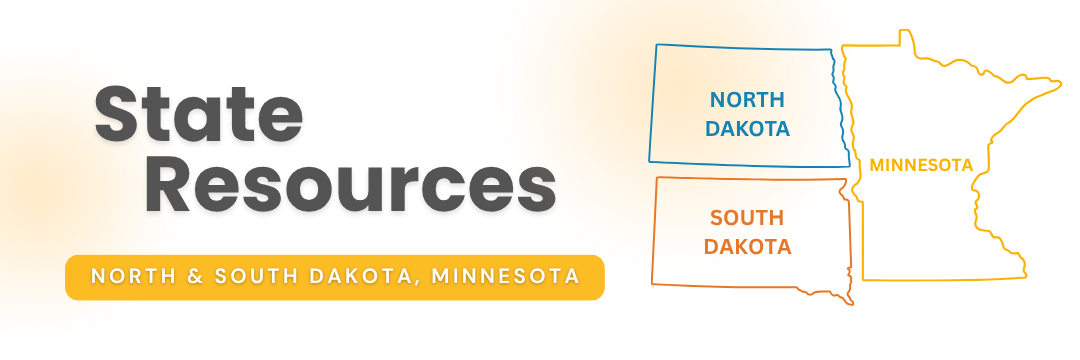Recognizing the Signs of Dyslexia
Signs of dyslexia can start showing up early, yet are often not concerning until your child starts school. Most children are ready to learn to read by kindergarten or first grade; however, children with dyslexia frequently can’t grasp letters and sounds as easily as their peers.
Differences in severity can mean that some with dyslexia move forward even as complications mount. It’s never too early – or too late, even in middle school, high school, college, or adulthood, people can gain lost ground. We’re specialists with answers.
Please check each sign you have seen or are currently seeing in your loved one. If you check three or more of the following, we encourage you to complete the form and submit it below to receive more information.
If you would like to bring the checklist directly to your child’s teacher, you can download our printable version.
Co-Occurring Learning Challenges
Individuals with dyslexia may have other related challenges. However, you can have dyslexia without other associated challenges. Some of the co-existing struggles are described below.
-
Handwriting that is difficult to read (messy, ineligible)
Poor or slow handwriting
Poor or inconsistent letter formation (odd starting and stopping points)
Spacing between words, or letters within words is poor (squished or far apart)
Punctuation is missing
Letters sit above or below the line (tails don’t go below line)The slant of the letters is inconsistent
Letter height and/or letter height relationships are inconsistent
Difficulty copying from the board or page to page
Poor fine motor skills
Unsure of handedness (right, left, or both)
Difficulty keeping up with taking notes in class
Does not like to write (the physical act)
-
Difficulty counting accurately 1 - 10 and into teen numbers
Trouble understanding number quantities and place values
Lack of place value knowledge
Difficulty knowing mathematical symbols (+) (-) (x) (/)
Difficulty knowing mathematical language: addition/subtraction/sum/difference
Difficulty knowing mathematical language: multiplication/division
Understanding how numbers fit together
Recalling math facts, like 2 + 4 = 6, or 3 × 4 = 12
Using concepts like “less than” and “more than”
Distinguishing left from right
Reading a clock with hands
Working with dollars and coins
May misread or miswrite numbers (17 is written as 71)
Difficulty memorizing and retrieving math facts (addition and multiplication facts)
Difficulty copying math problems and organizing written work
Many calculation errors
Difficulty retaining math vocabulary concepts
-
Physical activity: too much or too little
Frequent and significant mood swings
Attention difficulties
Highly distractible
Impulsive
Does not listen well
No tolerance for boredom
Poor time management
Odd sleep cycles
Inconsistent performance
Disorganized
Other symptoms: chatterbox (talks excessively, interrupts conversations frequently), strong sense of justice (bossy), lots of allergies, terrible penmanship, trouble remembering daily routines
Relatives with AD/HD
-
Activation: difficulty organizing, prioritizing, and activating to complete work
Focus: trouble focusing, sustaining and shifting attention to a task
Effort: Difficulty sustaining effort to continue work when it’s hard
Emotion: Managing frustrations and emotions
Memory: trouble utilizing working memory and accessing information
Action: Unable to monitor and self-regulate actions
If you prefer a physical copy, please download our printable version.
What To Do Next
Knowing exactly why your child struggles with reading, writing, and spelling is essential to understanding the proper tools to create a successful learning environment for their entire educational career.
Dyslexia Assessment
When reading is a struggle, answers matter. Our assessments look at the whole picture— strengths, challenges, and the true cause of difficulty— so families know where to begin. This is the first step toward the proper support.
Click here to learn more about our assessments
See more at IDA Dyslexia Handbook: What Every Family Should Know.
Who Can Help
Dyslexia is identifiable with 92 percent accuracy at age 5 1/2. However, an evaluation is necessary at any age if a child struggles with reading, spelling, and writing.
An assessment of dyslexia can be made by people extensively trained in dyslexia evaluation methods.
A medical diagnosis of dyslexia is performed by a qualified psychologist, neuropsychologist, speech-language pathologist, or other literacy professional.
A Step-By-Step Guide
You are not starting from scratch—you’re starting with support.
Haley’s Hope guides families and educators toward meaningful, lasting solutions. Helping a child with dyslexia thrive in school can sometimes feel overwhelming, but you can make a massive difference with the right tools and mindset.
-
Knowledge builds confidence. Attend workshops, read recommended books, and connect with other parents who have walked this road. The more you understand about dyslexia, the better equipped you’ll be to work alongside educators and make informed decisions about your child’s learning and emotional well-being.
-
A three-ring binder can become one of your most powerful advocacy tools. Collect copies of your child’s assignments, tests, teacher notes, and assessments—organized by subject and date. You can also include your own observations. This helps you spot patterns over time and brings real evidence to any school meetings or evaluations.
-
Keep a file of trusted professionals who can support your child’s needs. This might include:
Tutors trained in structured literacy
Pediatricians familiar with learning differences
Mental health professionals who support learning-related stress
School administrators and teachers
Educational advocates who can attend school meetings with you
-
Some days just won’t go smoothly — and that’s okay. Help your child recognize when things feel off, and offer reassurance that these moments are temporary. Together, brainstorm ways to reset or cope, and reinforce that setbacks don’t define them.
-
Your child may be working hard to decode basic words, but that doesn’t mean they should miss out on rich language. Read aloud to your child often, listen to audiobooks, and discuss what you read together. This builds vocabulary, background knowledge, and a love for stories— skills essential for future success.
-
Every child has something they love or excel at. Whether it’s art, athletics, science, or animals, help them develop and share that passion. This builds confidence and gives them a chance to shine among peers.
-
Honest conversations build trust. Use clear, simple language to explain dyslexia in a way your child can understand. When children know what’s going on and why certain things are hard, it can reduce shame and help them develop a strong self-identity.
-
Living with a learning difference can be stressful. Help your child keep perspective by filling life with humor, joy, and small victories. Laughter goes a long way in building resilience— for them and for you.
Dyslexia in North Dakota Schools
In 2023, North Dakota passed a law with key requirements for schools to help children with reading difficulties. The law is North Dakota Century Code NDCC 15.1-32-26, in which dyslexia is defined as a neurological (brain) difference that causes difficulties reading words, spelling, and decoding.
Educator’s Guide to North Dakota Dyslexia Law
Find out about:
1) What must North Dakota School’s do about dyslexia?
2) Further Diagnosis
3) Intervention Pathways
4) Intervention Services
5) Ongoing evaluations through assessment
6) Professional Development
Dyslexia in Minnesota Schools
The Minnesota Department of Education (MDE) passed the READ Act to support school districts and charter schools in conducting universal literacy and dyslexia screening in grades K-3.
The READ Act requires mandatory screening of every child in kindergarten, first, second, and third grade, including multilingual learners and students receiving special education services, using a screening tool approved by the Department of Education. Screening must be completed three times per year: Fall (within the first six weeks of the school year), Winter (by February 15th each year), and Spring (within the last six weeks of the school year), to measure foundational reading skills, including phonemic awareness, phonics, decoding, fluency, oral language, and for characteristics of dyslexia. Screening for characteristics of dyslexia may be integrated within universal screening.
Dyslexia in South Dakota Schools
South Dakota mandates early dyslexia screening, structured interventions, and evidence-based literacy training for teachers. Educators must complete professional development focused on dyslexia identification and evidence-based instruction.





